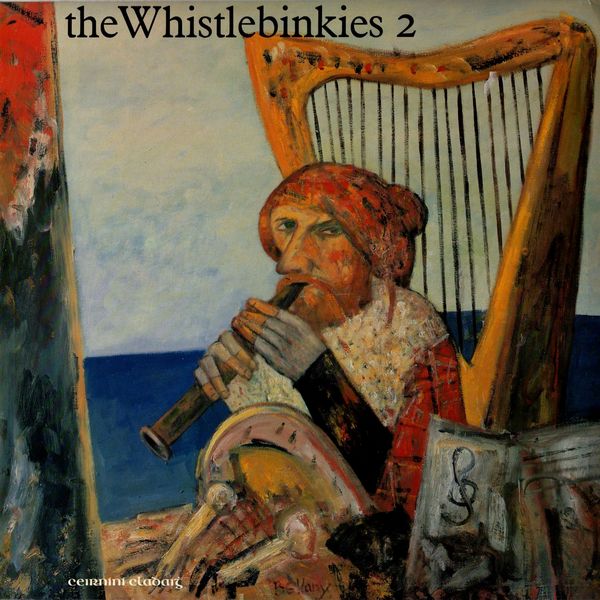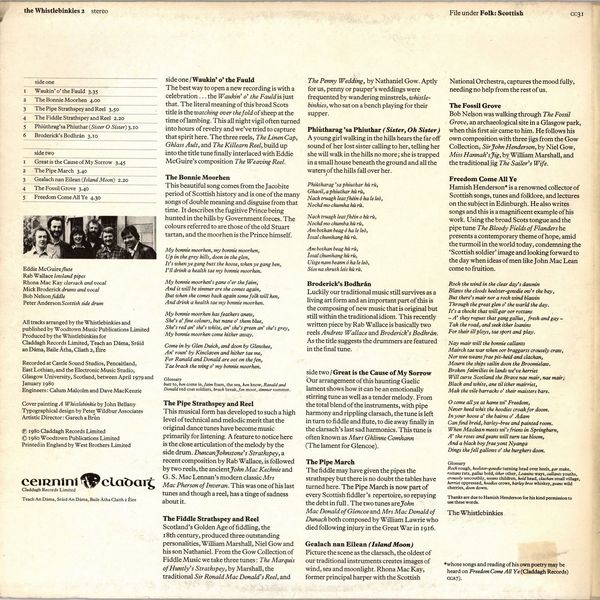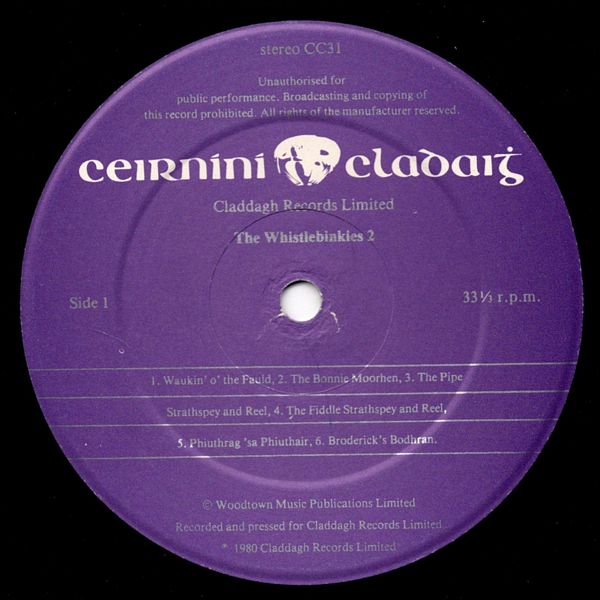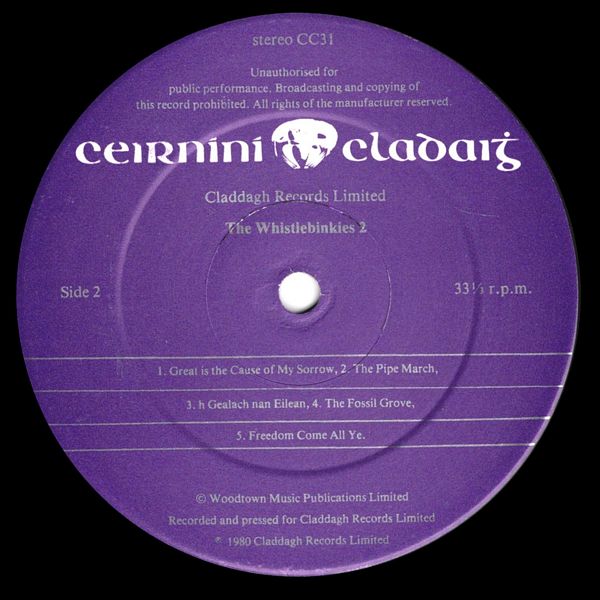
 |


 |
Sleeve Notes
Waukin' o' the Fauld — The best way to open a new recording is with a celebration … the Waukin' o' the Fauld is just that. The literal meaning of this broad Scots title is the watching over the fold of sheep at the time oflambing. This all night vigil often turned into hours of revelry and we've tried to capture that spirit here. The three reels, The Linen Cap, Ghlass Ault, and The Killearn Reel, build up into the title tune finally interlaced with Eddie McGuire's composition The Weaving Reel.
The Bonnie Moorhen — This beautiful song comes from the Jacobite period of Scottish history and is one of the many songs of double meaning and disguise from that time. It describes the fugitive Prince being hunted in the hills by Government forces. The colours referred to are those of the old Stuart tartan, and the moorhen is the Prince himself.
The Pipe Strathspey and Reel — This musical form has developed to such a high level of technical and melodic merit that the original dance tunes have become music primarily for listening. A feature to notice here is the close articulation of the melody by the side drum. Duncanjohnstone's Strathspey, a recent composition by Rab Wallace, is followed by two reels, the ancient John Mac Kechnie and G. S. Mac Lennan's modern classic Mrs Mac Pherson of Inveran. This was one of his last tunes and though a reel, has a tinge of sadness about it.
The Fiddle Strathspey and Reel — Scotland's Golden Age of fiddling, the 18th century, produced three outstanding personalities, William Marshall, Niel Gow and his son Nathaniel. From the Gow Collection of Fiddle Music we take three tunes : The Marquis of Huntly's Strathspey, by Marshall, the traditional Sir Ronald Mac Donald's Reel, and The Penny Wedding, by Nathaniel Gow. Aptly for us, penny or pauper's weddings were frequented by wandering minstrels, whistle-binkies, who sat on a bench playing for their supper.
Phiútharag 'sa Phiuthar (Sister, Oh Sister) — A young girl walking in the hills hears the far off sound of her lost sister calling to her, telling her she will walk in the hills no more; she is trapped in a small house beneath the ground and all the waters of the hills fall over her.
Broderick's Bodhran — Luckily our traditional music still survives as a living art form and an important part of this is the composing of new music that is original but still within the traditional idiom. This recently written piece by Rab Wallace is basically two reels Andrew Wallace and Broderick's Bodhrcin. As the title suggests the drummers are featured in the final tune.
Great is the Cause of My Sorrow — Our arrangement of this haunting Gaelic lament shows how it can be an emotionally stirring tune as well as a tender melody. From the total blend of the instruments, with pipe harmony and rippling clarsach, the tune is left in turn to fiddle and flute, to die away finally in the clarsach's last sad harmonics. This tune is often known as Murt Ghlinne Comhann (The lament for Glencoe).
The Pipe March — The fiddle may have given the pipes the strathspey but there is no doubt the tables have turned here. The Pipe March is now part of every Scottish fiddler's repertoire, so repaying the debt in full. The two tunes are John Mac Donald of Glencoe and Mrs Mac Donald of Dunach both composed by William Lawrie who died following injury in the Great War in 1916.
Gealach nan Eilean (Island Moon) — Picture the scene as the clarsach, the oldest of our traditional instruments creates images of wind, sea and moonlight. Rhona Mac Kay, former principal harper with the Scottish National Orchestra, captures the mood fully, needing no help from the rest of us.
The Fossil Grove — Bob Nelson was walking through The Fossil Grove, an archaeological site in a Glasgow park, when this first air came to him. He follows his own composition with three jigs from the Gow Collection, Sirjohn Henderson, by Niel Gow, Miss Hannah's jig, by William Marshall, and the traditional jig The Sailor's Wife.
Freedom Come All Ye — Hamish Henderson* is a renowned collector of Scottish songs, tunes and folklore, and lectures on the subject in Edinburgh. He also writes songs and this is a magnificent example of his work. Using the broad Scots tongue and the pipe tune The Bloody Fields of Flanders he presents a contemporary theme of hope, amid the turmoil in the world today, condemning the 'Scottish soldier' image and looking forward to the day when ideas of men like John MacLean come to fruition.
Notes
The second LP for Claddagh Records in 1980 saw the start of a collaboration with artist John Bellany and Claddagh's artistic director Garech Browne to create cover paintings or extracts from his work. This one is titled 'A Whistlebinkie'.